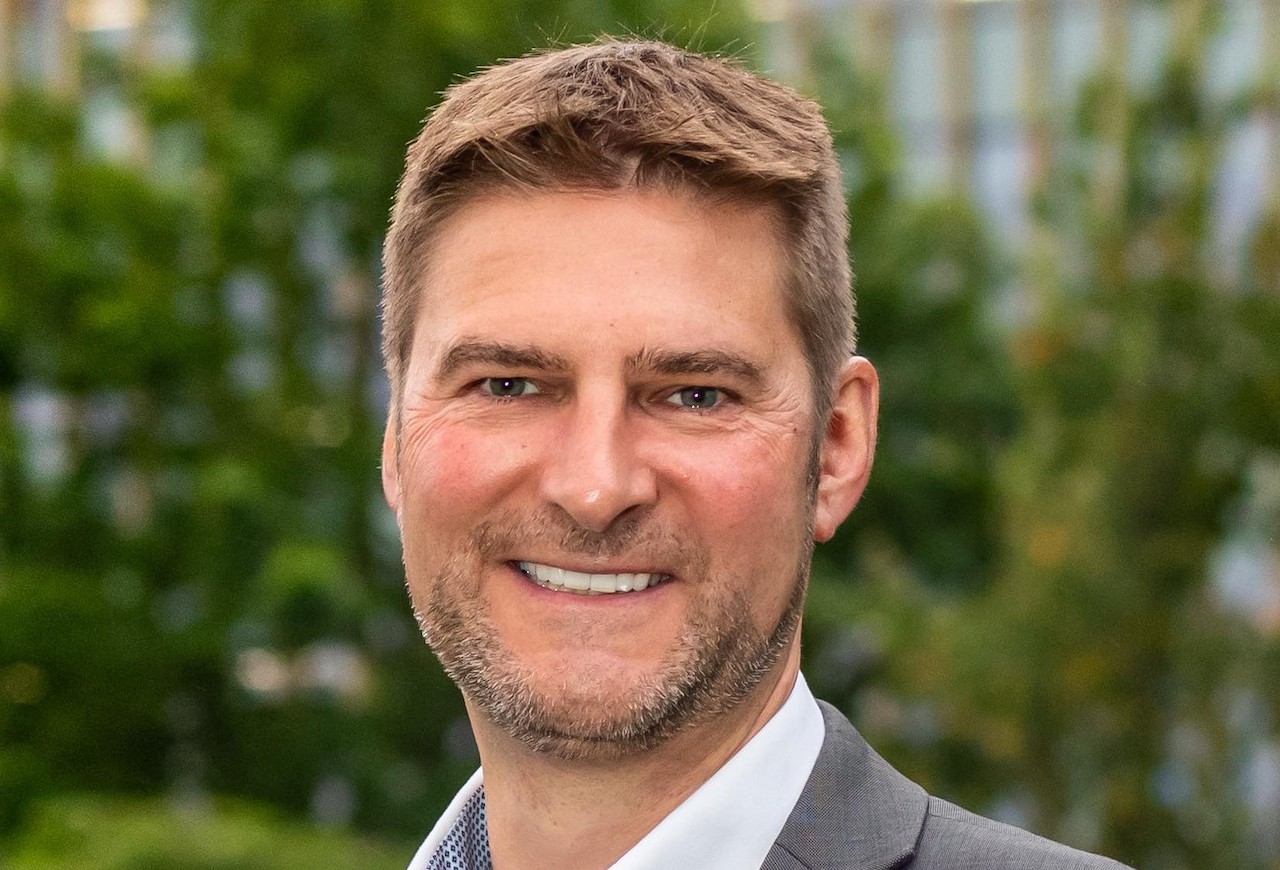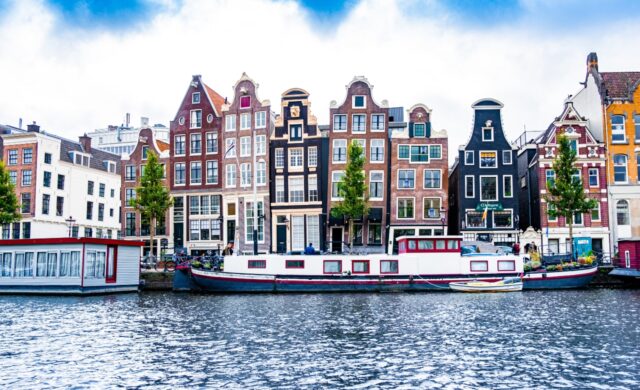Over the past decade, the EU-backed EIT Climate-KIC accelerator programme has supported 2,100 solutions and secured nearly €2bn in capital to address different aspects to the climate challenge.

Creative destruction in business and finance is critical to achieving Europe’s transition to a zero-carbon, climate-resilient future. It challenges the status quo and fuels a vital pipeline of innovative solutions to transform the world’s energy and climate system, suggests Andy Kerr, chief strategy officer at EIT Climate-KIC.
We caught up with him in the sidelines of last week’s European Sustainable Energy Week (EUSEW, see more) in Brussels.
Here, the global backdrop is important; the world is still grappling with an energy crunch triggered by Russia’s invasion of Ukraine. And despite significant progress, net-zero imperatives are struggling to compete with the deep-rooted geopolitics of fossil fuels. Green climate and energy solutions – the product of innovation and entrepreneurship – are needed more than ever to unlock systemic change, suggests Kerr.
Over the past decade, the EIT Climate-KIC accelerator programme has supported 2,100 solutions and secured nearly €2bn in capital from a globally diverse and connected community.
Impact Investor’s Christian Nielsen (CN): Firstly, what is the main idea behind the EIT KICs and EIT Climate-KIC, in particular?
EIT Climate-KIC’s Andy Kerr (AK): The Knowledge and Innovation Communities were created and funded by the European Institute of Innovation and Technology (EIT). They bring together businesses (large corporates and SMEs, including start-ups), research centres and higher education institutions as partners, creating a favourable environment for creative thought and innovation to flourish, allowing novel products and services to be developed, new companies to be started or accelerated, and a new generation of entrepreneurs to be trained to benefit Europe and beyond.
After years of developing solutions, new companies and capabilities to address different aspects of the climate challenge, we realised that many of these actions were not scaling at the speed required, given the urgency of the problems the world faces. In other words, we not only need to support the supply of innovative products and services, but we must also connect and shape the enabling conditions – access to finance, regulatory frameworks to support new markets, citizen engagement, and shaping political narratives – to allow these innovations to flourish and change our fossil-fuel embedded systems. So, in 2018, we introduced a new demand-led strategy to help change the places where we live. Today, we support cities, regions, and industrial value chains in countries to reach their ambitious climate targets.
In practice, we create the conditions needed to demonstrate positive change and provoke a shift in mindsets to reach those goals. Together with cities, regions, and industries, we orchestrate large-scale demonstrations of change that have the possibility to trigger exponential decarbonisation and build resilience. Our work with the city of Madrid is a good example of this.
CN: Can you talk a little about the importance of innovation in meeting global/EU green ambitions?
AK: Innovation is absolutely critical to meet any climate targets. We will not be able to move away from business as usual without it. But we recognise that this critical innovation isn’t the narrow notion of technological innovation often applied to different problem areas. We understand innovation in a broader sense. It is about regeneration, not just substitution. It needs to be scaling our imagination, and it needs to be meaningful to people and places.
Innovation for us means anything from innovative green products to alternative services, upgraded policies, recent technologies, education programmes, or novel financial instruments. When we work with ‘challenge owners’ of innovation, we mean anyone trying to achieve ambitious climate targets – might they be a city mayor, a ministry, or industry leaders.
CN: How is climate impact changing the business landscape? Where does EIT Climate-KIC’s climate accelerator instrument fit in here?
AK: The climate crisis is reshaping the business landscape. Governments are implementing new laws, consumers are going green, extreme weather events are disrupting supply chains, and investors are pushing for higher sustainability standards. Overall, the economy is already changing quite rapidly and in another five years’ time, things will look quite different to how they do today. That creates both a lot of risk for existing businesses and a lot of opportunities for new products and services to enter the market. Moving to net-zero emissions now means that wherever you find emissions in the economy you can also find a great business opportunity to change things. Transport, food, construction – everything needs to change and change very fast.
That’s where innovation and our ClimAccelerator comes into play. We help generate new solutions to future-proof the economy and enable rapid decarbonisation – hopefully without disrupting too much along the way. We aim to support entrepreneurs and empower them to make key advancements in the technologies and business models needed to respond to a variety of climate challenges.
CN: What other novel finance mechanisms/models are you observing or working on at the KICs?
AK: There are a number of governments, cities and companies now signed up to net-zero by 2030 or 2050 and many of them have made legally binding commitments. However, most people have no idea how to actually get all the way to net-zero without significant disruption that risks backlash and protest. So we have launched a series of demonstrations that dive into the ‘messy middle’ ground and find new ways of decarbonising the economy, strengthening resilience, while also building a just and fair society. People need to see with their own eyes that it is possible – we need to showcase what resilient, thriving places look like.
The demonstrations connect around 40 or 50 innovation projects together in a coordinated push to change the way a system works and show that a different future is possible. It could be a city, a company, or a supply chain – any system that is complicated and hard to change. That is where we love to work. We use innovation as a tool and an argument to do things differently and challenge the status quo. That includes the way we invest in change where we are bringing together public and private investors to work together on supporting the transition in a coordinated way. For example, we have more than 400 climate-aligned investors that follow the ClimAccelerator programme and invest heavily in the startups that we help create. Last year was extremely exciting with our start-ups closing 167 funding rounds and raising more than €1bn for the first time. It goes to show how fast climate-aligned investing is growing and how much bigger the opportunity is getting each year. It’s also delivering a nice benefit to EIT Climate-KIC as we are now Europe’s most active venturing firm with equity stakes in more than 90 portfolio companies.
CN: What sort of challenges are you still seeing for investors and climate finance in general?
AK: We see now that many investors have the motivation to invest in climate solutions – they see the business opportunities from one of the world’s fastest-growing economic sectors and they are also motivated, for example, by the new European sustainable finance regulations coming into force. The challenges come from institutional issues, from gaps in capabilities, and from the pipeline of opportunities.
Institutionally, we still see major players not factoring in climate change into lending decisions. For example, the recent Global Climate Finance Summit in Paris explored how to overhaul the world’s development banks (i.e. World Bank and IMF) and usher them into the post-pandemic world with a rapidly changing climate.
On the capability challenge, a lot of investors still struggle to assess the risks of investing in the emerging net-zero markets – e.g. blended public-private finance solutions – or how to think about the portfolio of investments required for the transformation of a whole supply chain or place rather than project-by-project investments. So there is a capability and knowledge gap that requires education. Our ‘learning services’ programmes focus on building these capabilities.
The second challenge we see for investors is finding a good pipeline of opportunities. Often investors are boxed into a sector or investment thesis that is heavily anchored in the current economy and not well suited to investing in transformative or disruptive solutions. Our investment programmes offer up a pipeline of new startups that respond to climate challenges and can be connected to the portfolio of innovation underway in the Deep Demonstration projects, to further accelerate innovation and change. For example, we lead a consortium of partners helping over 100 European cities trying to reach net-zero emissions by 2030 through the EU Cities Mission. Each of these cities typically needs €10bn+ investment in buildings and infrastructure in the coming six years, an overall €1trn market into which we can bring scalable solutions.





